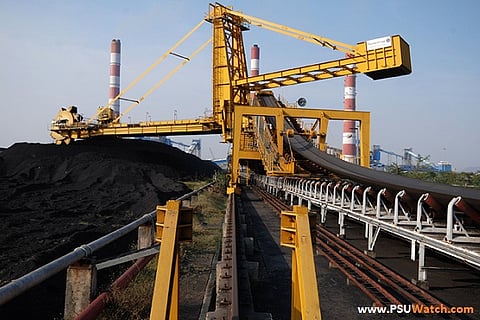
- News Updates
- PSU Watch
- Defence News
- Policy Watch
- हिन्दी न्यूज़
- Jobs Watch
- States News
- Event News

New Delhi: While noting that issues contributing to debt on India's stressed thermal power assets remain unresolved largely, IEEFA has said in a report that India should cancel those coal-fired power plant proposals that are currently floundering and stalled. The report warns against investing more good money in bad assets without addressing the underlying drivers behind India's stressed thermal power assets.
"Despite a number of years in the making, the issues leading to Indian thermal power assets becoming white elephants remain largely unresolved and problematic," the report noted.
Non-payment in India's thermal power generation sector – plagued by a staggering US$40-60 billion of nonperforming or stranded power generation assets – continues to seriously undermine the banking sector, particularly with the growing number of financially stressed, underutilised power plants.
In recent months, however, there has been some progress made in addressing the growing problem of stranded assets.
The National Company Law Tribunal (NCLT) is leading several resolution processes to revive stressed assets in the power sector. Some settlements have been achieved under the Insolvency and Bankruptcy Code (IBC) – like NHPC's takeover of the Lanco Teesta Hydropower project settled in October 2019. For others, settlement has been completed outside the IBC resolution process via a change in management, including Adani Power's acquisition of GMR Energy Chhattisgarh in August 2019, Renascent Power Ventures' (Tata Power and ICICI Bank) 75 percent acquisition of Prayagraj Power in December 2019, and Agritrade Resources' acquisition of SKS Power Binjokte in late 2018.
Despite this progress, IEEFA notes project resolutions have been limited to-date. Added to this, the recent decline in thermal power demand is seeing power plant utilisation rates drop to decade lows, acting as a new key headwind against sustained resolution.
Electricity demand, a key indicator of economic activity, has been growing relatively consistently at over 6 percent annually during the last decade in India. However, in the nine months fiscal year to-date (April to December 2019), India's national electricity demand slowed to just +0.6 percent growth, with the last four months actually reporting a year-on-year decline.
IEEFA notes there is a key financial risk for coal-fired power plants. With exceptionally strong hydro-electricity generation, India's coal-fired power generation is down 25 terawatt hours year-to-date (-2.5 percent year-on-year). Once built, non-mine mouth coal-fired power generation has the highest marginal cost of operation. It is more financially exposed to weaker than expected demand and increased zero-marginal cost supply of renewable energy in the power generation sector. Coal shortages, the power distribution company's (DISCOMs) poor ability to pay for supply, a lack of accountability by promoters, air pollution regulations, growing water scarcity pressures, and the increasing cost-competitiveness of renewable energy are other drivers contributing to stressed coal-fired power in India.
As thermal power continues to lose market share, India has made progress in renewable energy installations. In the last three years, net capacity additions have been 10-14GW annually, while the net capacity addition of coal-fired capacity has reduced to 3-4GW annually. Renewable energy will continue its upward trajectory in the long term as the technology is cheaper with significantly lower externalities (near zero carbon emissions, air and particulate pollution, and water usage), in addition to the growing availability of debt and equity financing, and increasing economic advantages.
Renewable energy installations would increase more but for the national burden of the many non-performing thermal assets in the power sector. The banking system is hamstrung, unable to extend the necessary traditional energy sector flow of capital that is critical to sustained, strong economic growth in India.
